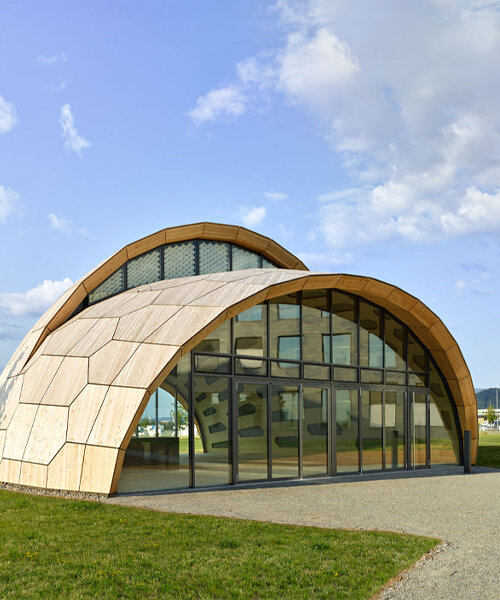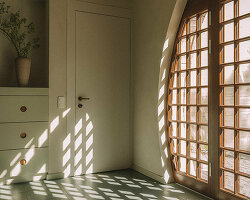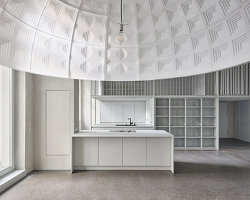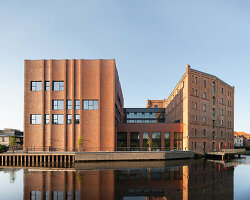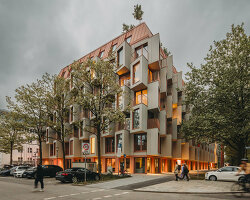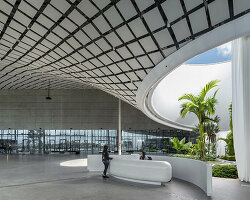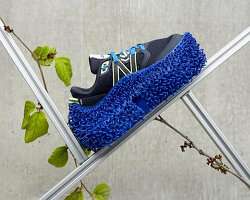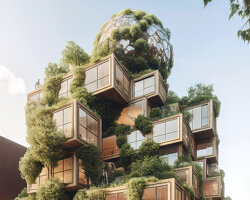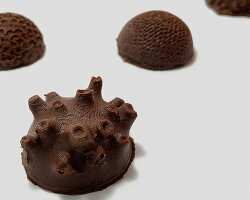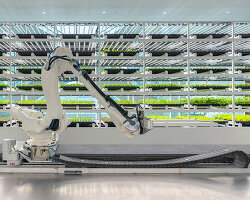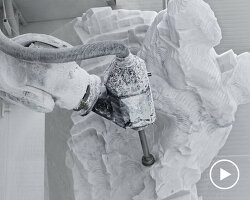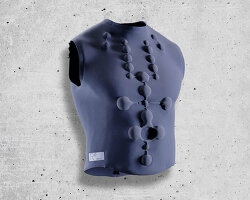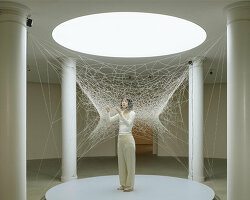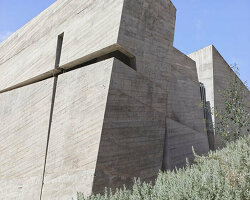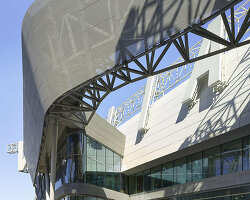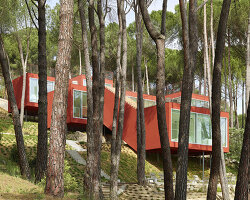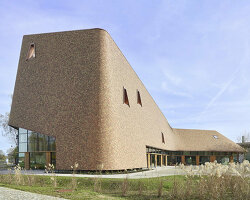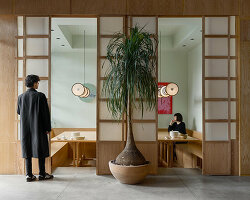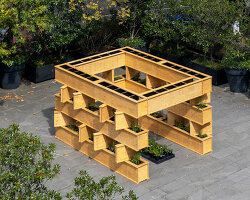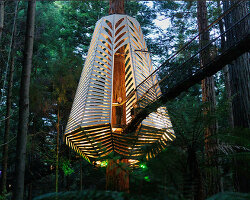livMatS Biomimetic Shell captured by roland halbe
The livMatS Biomimetic Shell is a collaborative project that joins the Clusters of Excellence, Integrative Computational Design and Construction for Architecture (IntCDC) at the University of Stuttgart and Living, Adaptive and Energy-autonomous Materials Systems (livMatS) at the University of Freiburg, Germany. Serving as an architectural incubator for the development of innovative, cross-disciplinary research ideas, the structure is a pioneering example of a fully deconstructible and reusable segmented timber shell construction designed to be highly resource-efficient and distinctive in shape. It combines the integrative development of computational design methods, robotic prefabrication and automated construction processes, and new forms of human-machine interaction in timber building.
Additional features include a large-scale skylight called ‘Solar Gate’, which offers thermal indoor comfort through a biomimetic, energy-autonomous, 4D-printed shading system. Coupled with an activated and recycled concrete floor slab, the shell becomes ideal for year-round use. A life cycle analysis of the livMatS Biomimetic Shell, photographed here by Roland Halbe, shows that it consumes 50% less material and has a 63% lower Global Warming Potential than conventional timber construction.
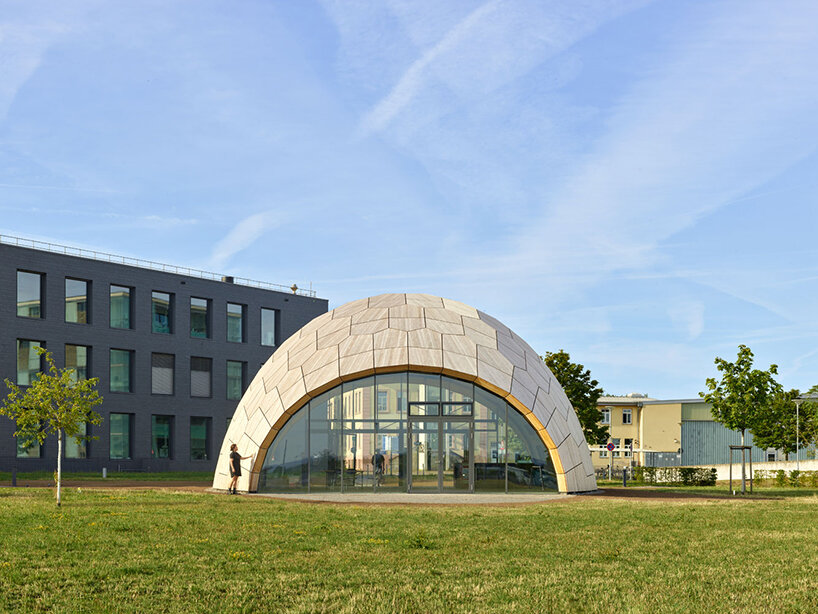
all images © Roland Halbe
insulating & segmented timber shell with hollow cassettes
The team at IntCDC collaborated with livMatS (more here) to design an independent and highly insulating Biomimetic Shell with a segmented and curving body inspired by the plate skeleton of sea urchins. Generously glazed at its front and back, the building’s unique architecture results from a deliberate combination of two partial shells with varying shapes and sizes, creating space for a skylight that brings in ample illumination. The timber shell spans 200 square meters and groups 127 hollow cassettes bound by cross-screwed joints. When assembled, the curved geometry works as a form-active structure with a free span of 16 meters and 27 kg/sqm of shell surface. Such a construction technique allows the building to be reused and ensures that all structural components can be separated.
According to the research teams, hollow cassettes represent a new resource-efficient and sustainable timber construction approach. Here, three-layer spruce boards and spruce edge beams are assembled as building modules to compose the 127 cassettes. Integrative computational design, robotic fabrication, and automated assembly make it possible to produce and create them cost-effectively despite the additional effort required for their load-adapted and geometrically differentiated construction.
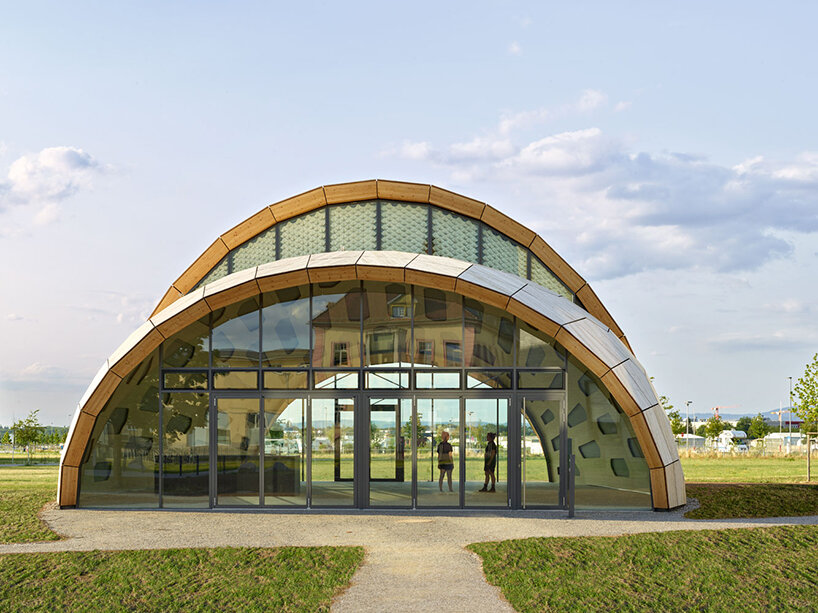
livMatS Biomimetic Shell at Freiburg University
designing a low-energy shading system inspired by plant cones
Due to high-energy demands for indoor comfort, buildings account for a significant proportion of global carbon emissions. In light of that, the livMatS Biomimetic Shell is designed to minimize technical equipment and operating energy needs. Equipped with wood fiber insulation, the building sits at a location that maximizes solar gains. Its thermally activated floor slab made of recycled concrete provides thermal indoor comfort in winter. At the same time, a weather-responsive shading system on the skylight minimizes heat loads due to solar input. The shading system follows the biomimetic principle of moisture-controlled opening and closing of plant cones, comprising 424 self-shaping elements made of bio-based materials. The elements are programmed using a 4D printing process for year-round solar shading while harvesting solar heat without requiring any operating energy.
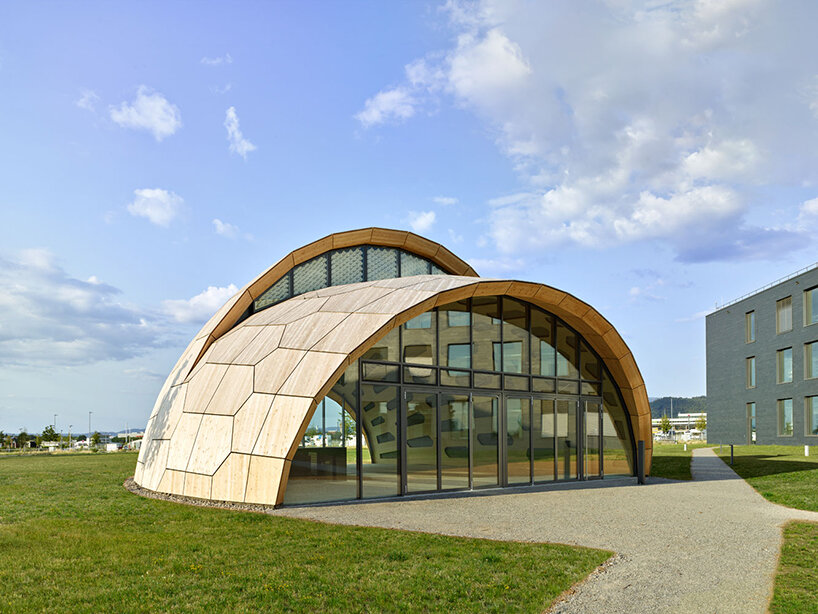
a timber structure inpsired by the plate skeleton of sea urchins
using robotic prefabrication to automate on-site assembly
Leveraging the power of high precision in robotic prefabrication, the project team used segmented lightweight timber structures for automated assembly on site, benefiting from its low component weight. For the livMatS Biomimetic Shell, two cyber-physical assembly platforms with end-effectors were developed. The assembly method consists of a robotic spider crane that picks up components with a vacuum gripper, automatically places them at the corresponding installation position, and holds them in position until screwed together. For quality assurance, a digital scan of selected cassettes uses a terrestrial laser scanner, which could then be compared with the target design geometry. This allowed both groups to detect any possible deviations in the geometry.
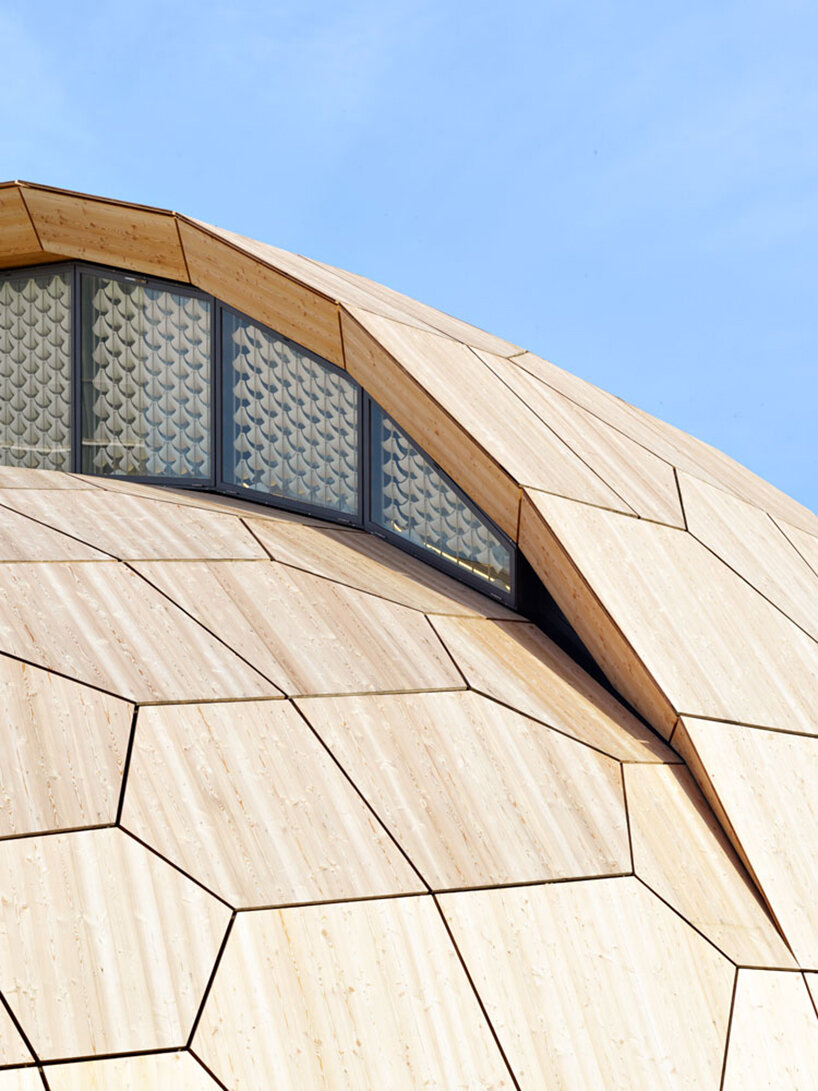
segmented patterns
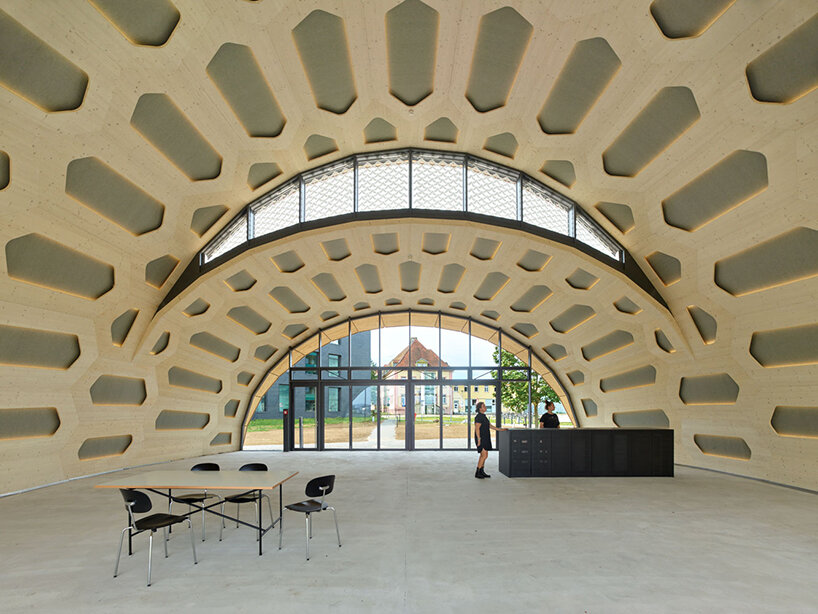
highly insulating interiors for year-round use
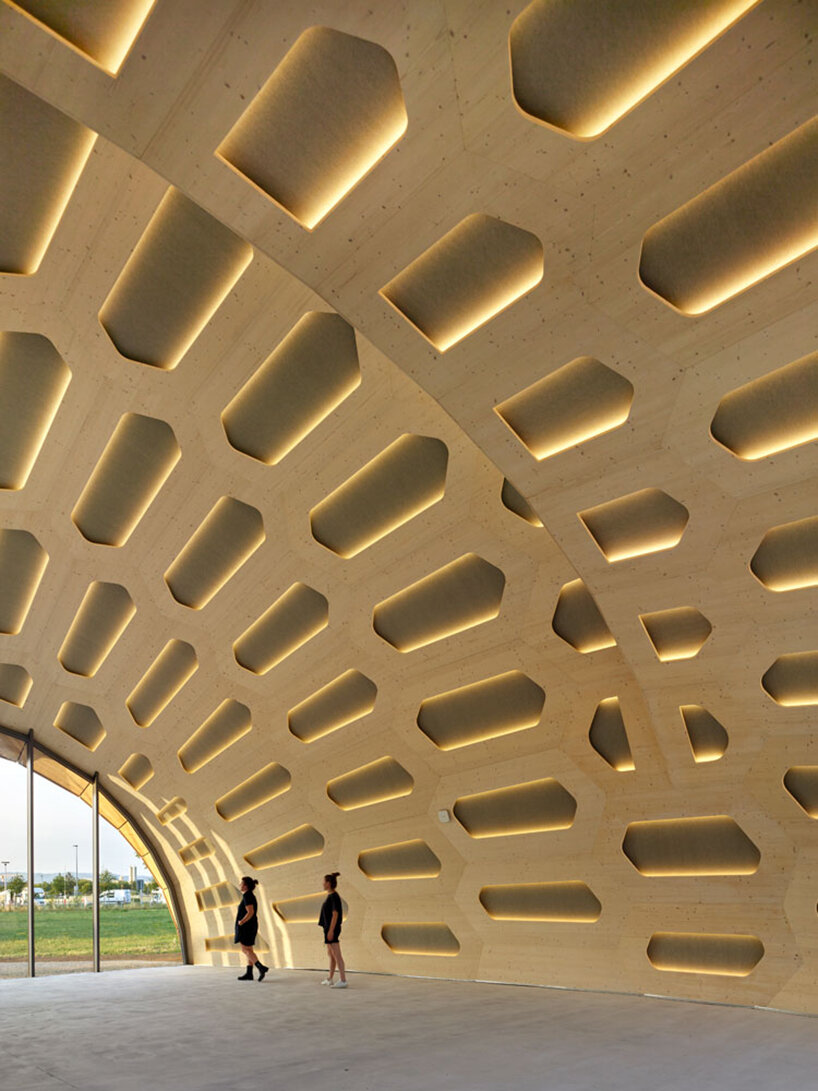
127 hollow cassettes compose the structure
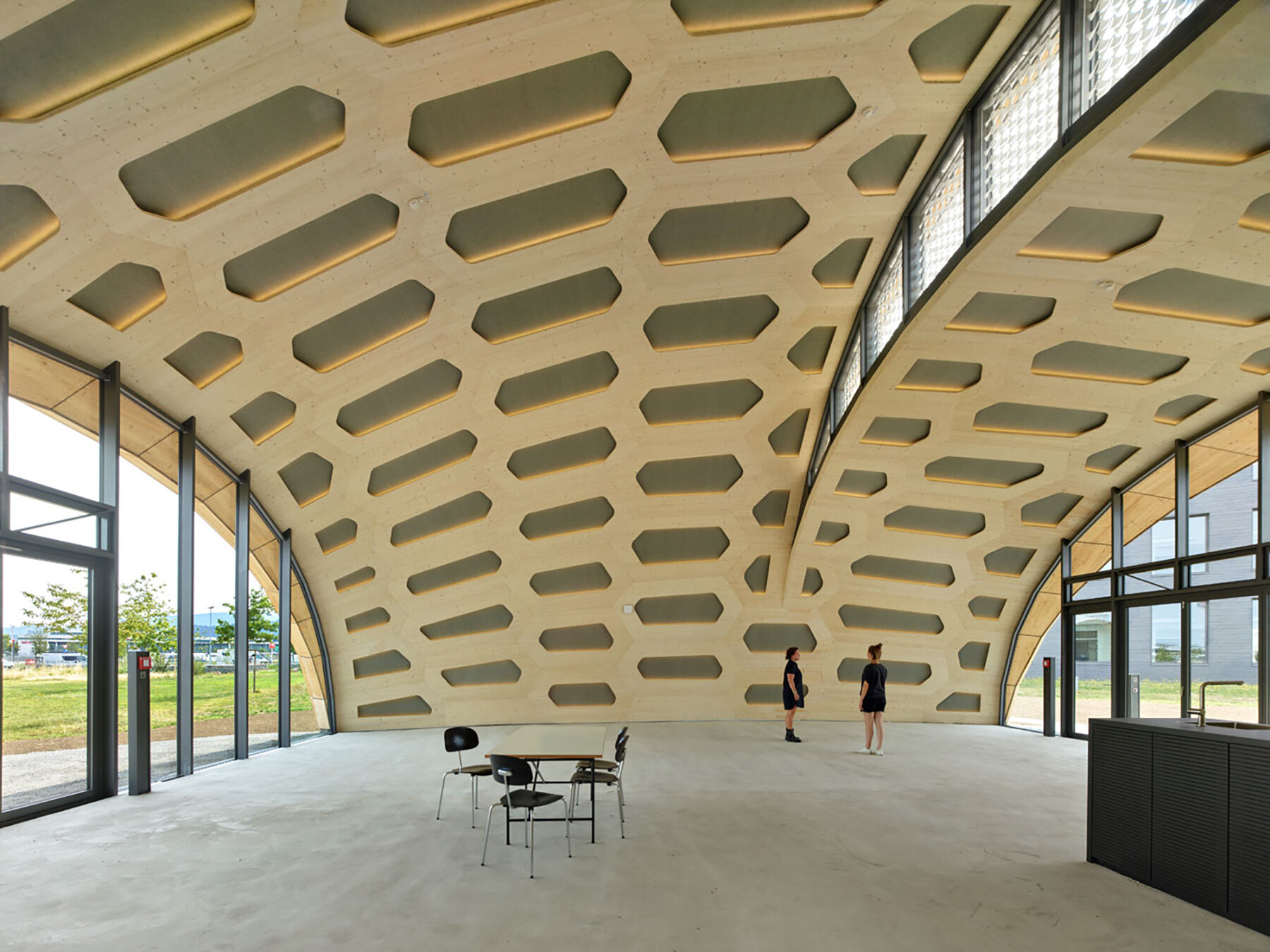
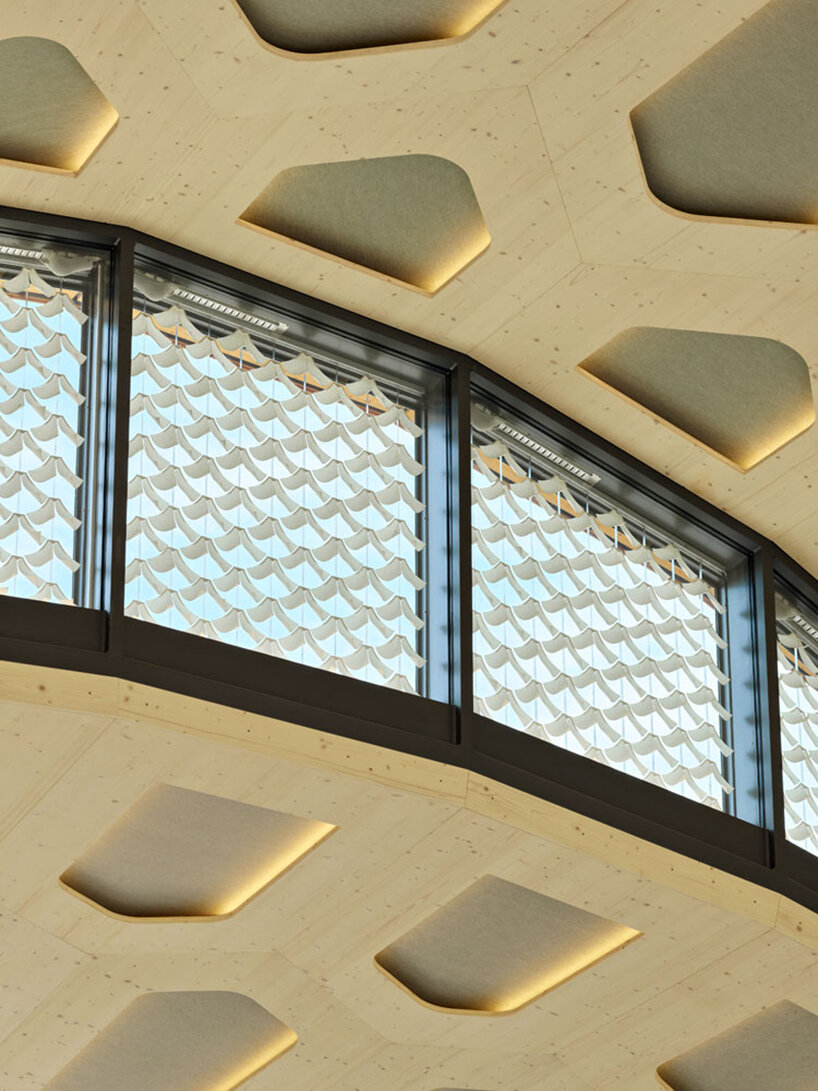
maximizing solar gains without compromising on comfort
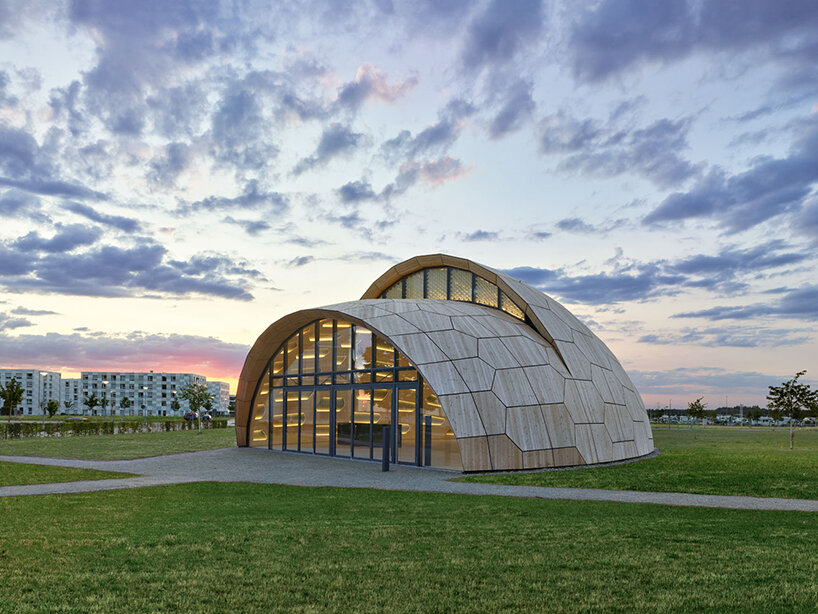
generously glazed facades
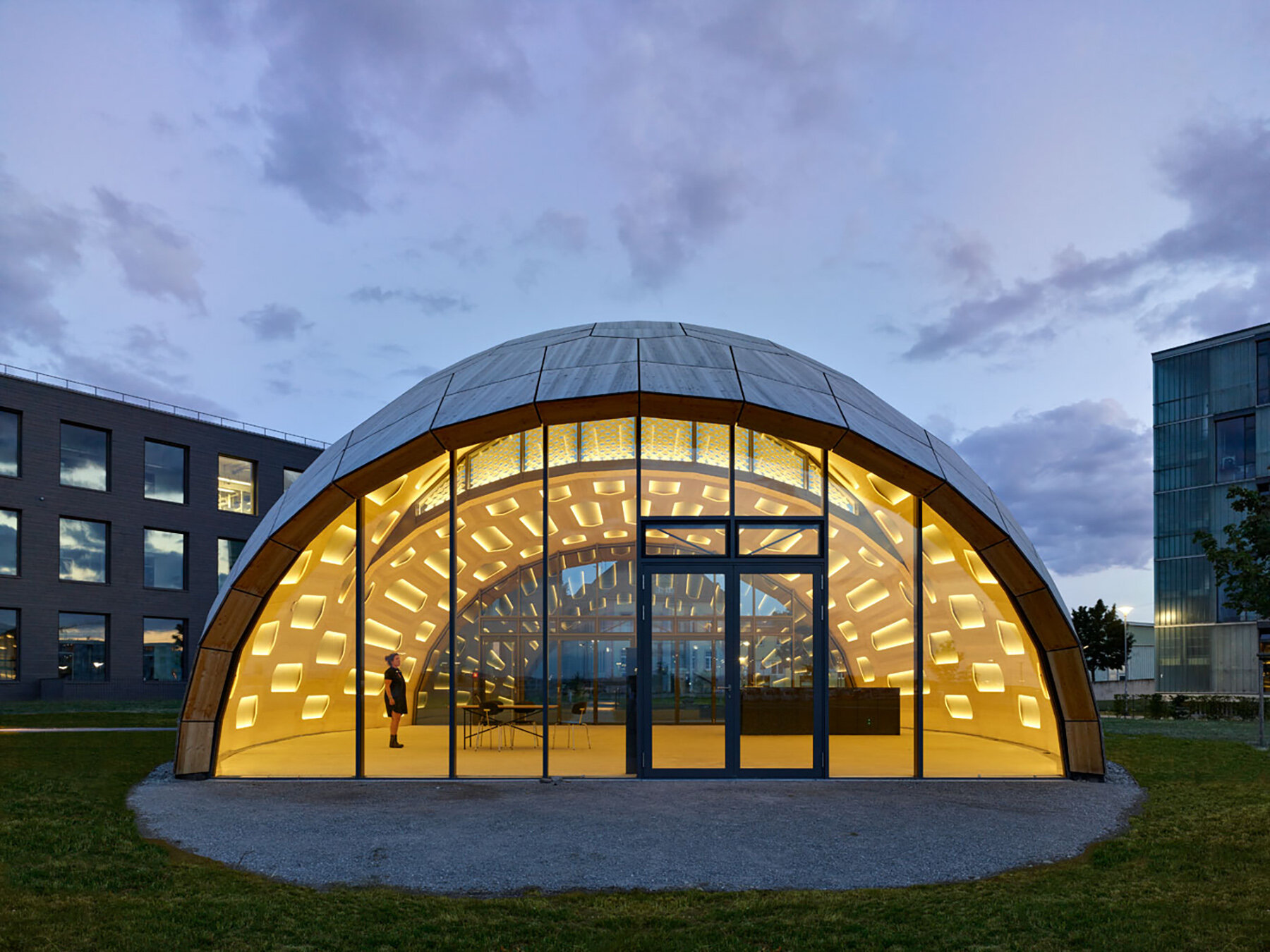
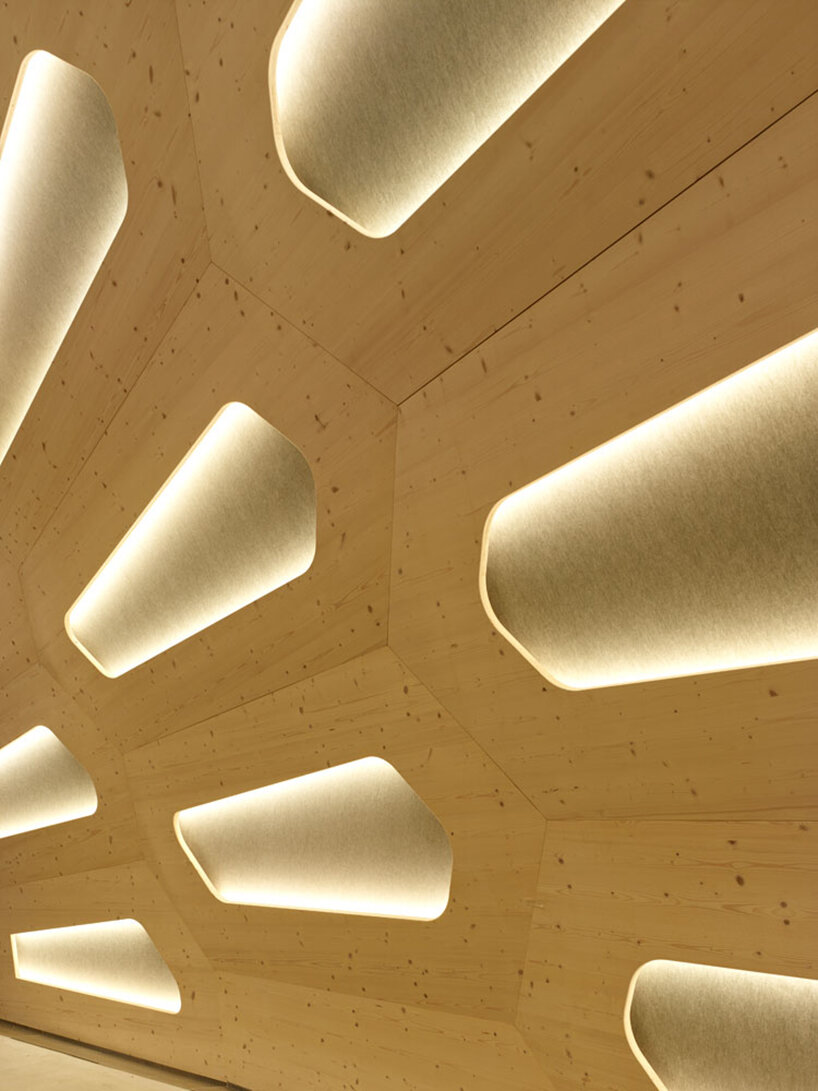
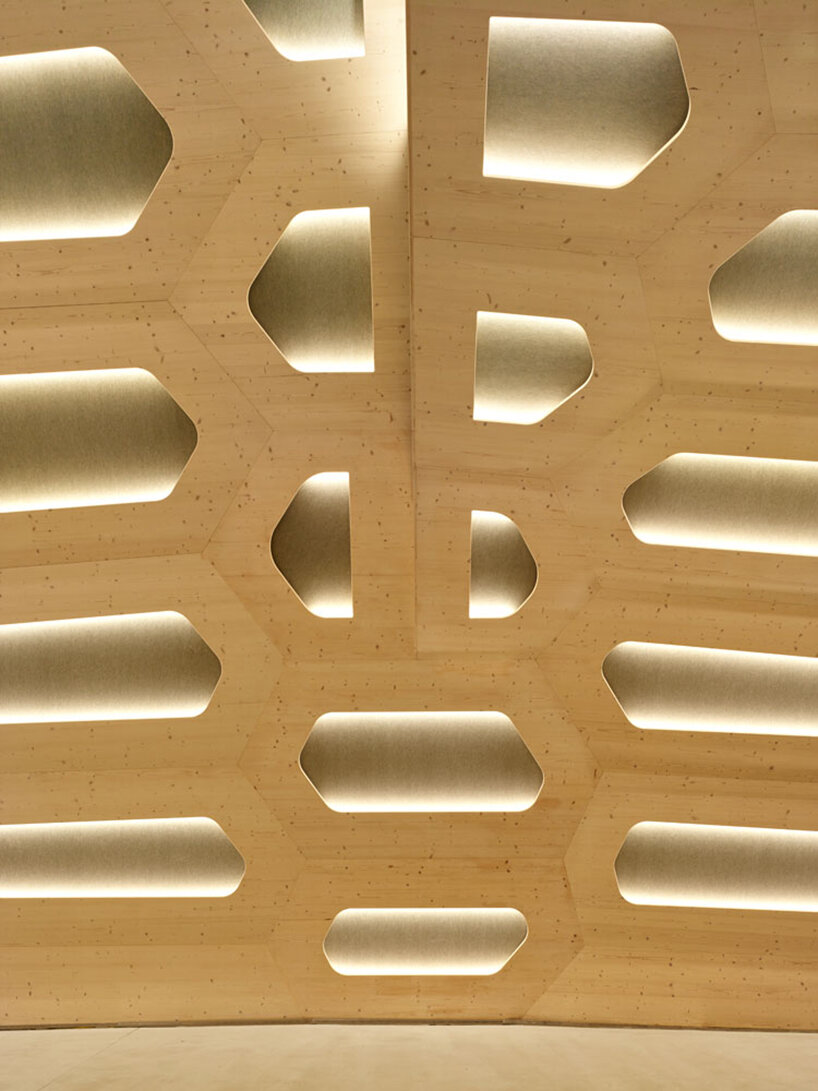
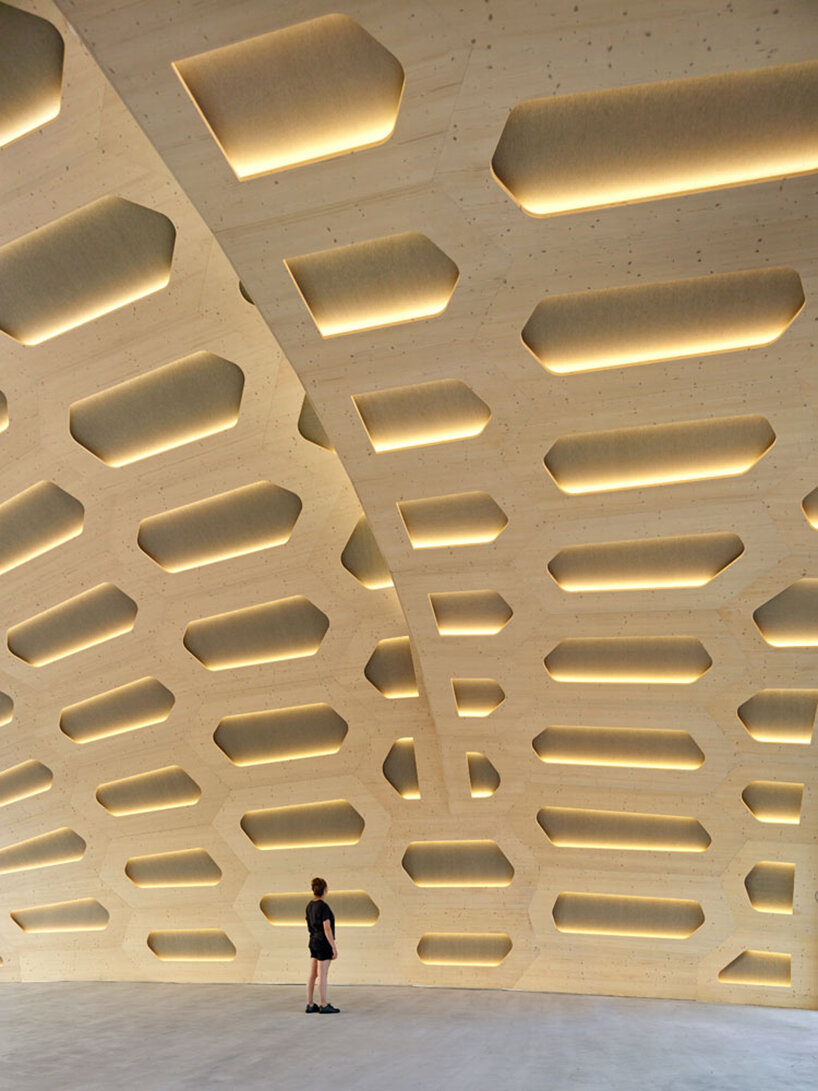
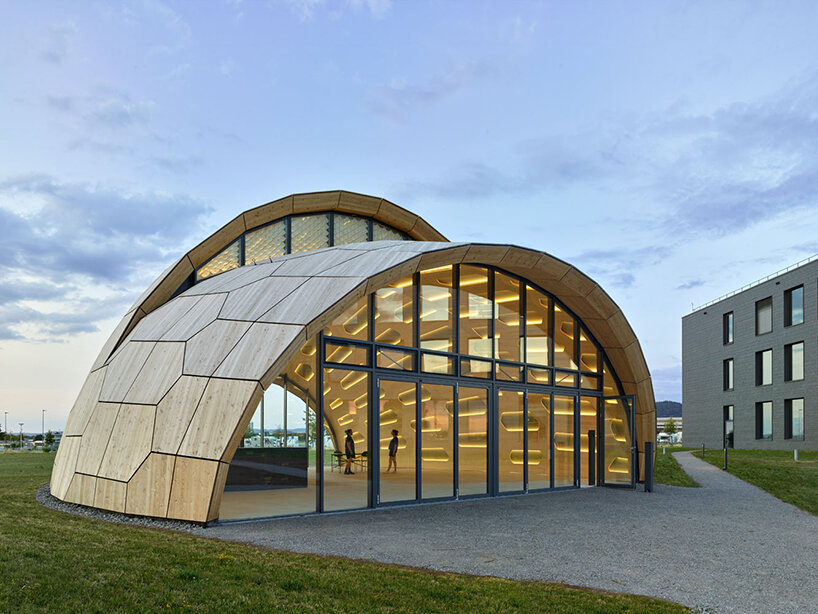
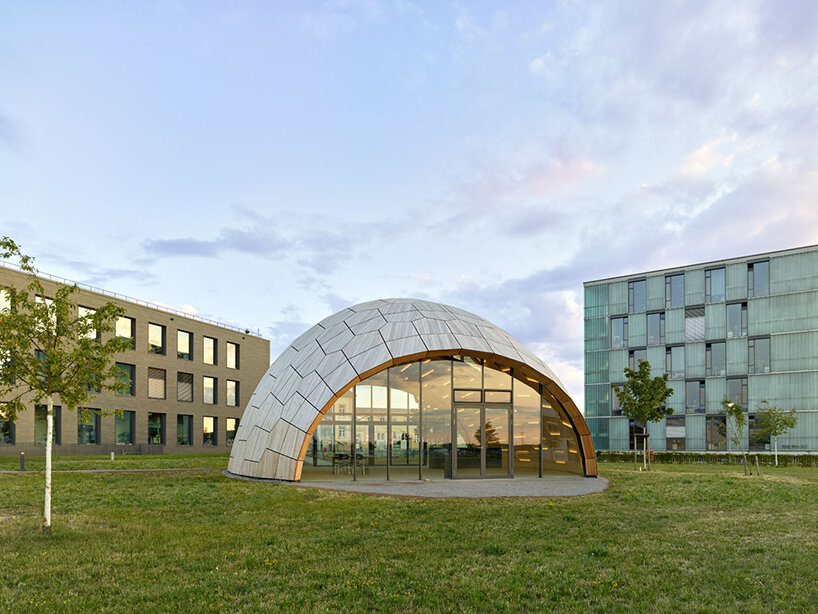
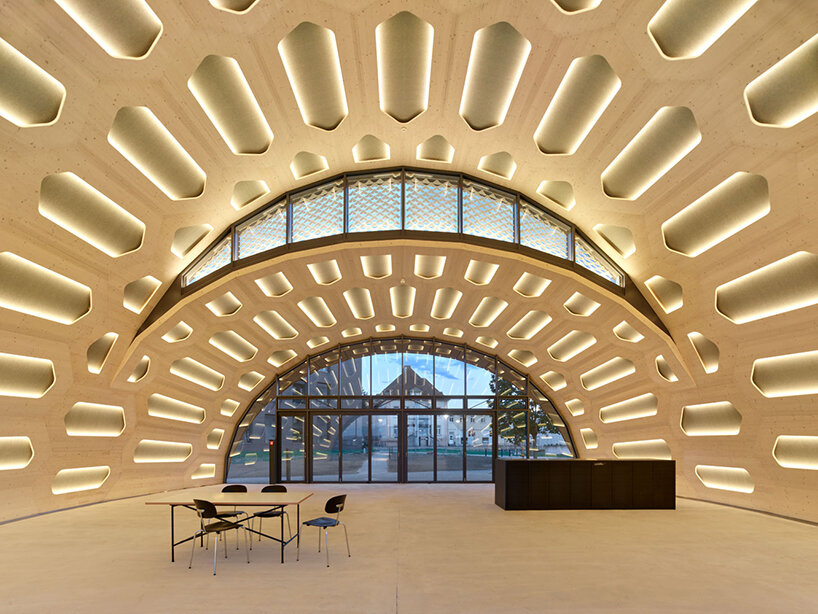
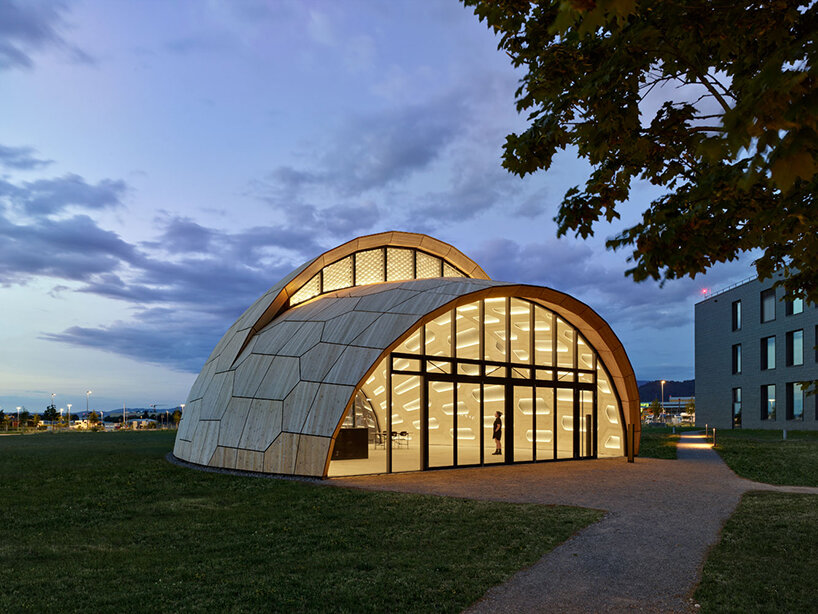
project info:
name: livMatS biomimetic timber shell
location: FIT Freiburg Center for Interactive Materials and Bioinspired Technologies, Germany
photographer: Roland Halbe | @rolandhalbe
— project partners —
Cluster of Excellence IntCDC, ICD Institute for Computational Design and Construction (Prof. Achim Menges, Felix Amtsberg, Monika Göbel, Hans Jakob Wagner, Laura Kiesewetter, Nils Opgenorth, Christoph Schlopschnat, Tim Stark, Simon Treml, Xiliu Yang / Biomimetic Shell; Dylan Wood, Tiffany Cheng, Ekin Sila Sahin, Yasaman Tahouni /Solar Gate, LivMatS (Prof. Dr. Jürgen Ruhe, Prof. Dr. Thomas Speck, Prof. Dr. Anna Fischer), ITKE Institute for Building Structures and Structural Design (Prof. Dr. Jan Knippers, Simon Bechert), Müllerblaustein HolzBauWerke GmbH, Blaustein (Jochen Friedel, Johannes Groner, Daniel Gold)
— research partners —
IntCDC, ISYS Institute for System Dynamics (Prof. Dr. Oliver Sawodny, Andreas Gienger, Anja Lauer, Sergej Klassen), IIGS Institute for Engineering Geodesy (Prof. Dr. Volker Schwieger, Sahar Abolhasani, Laura Balangé), ICD (Prof. Dr. Thomas Wortmann, Lior Skoury, Max Zorn), IABP Institute for Acoustics and Building Physics (Prof. Dr. Philip Leistner, Roberta di Bari, Rafael Horn), IntCDC Large Scale Construction Laboratory (Dennis Bartl, Sebastian Esser, Sven Hänzka, Hendrik Köhler)
— consulting engineers —
erdrich wodtke Planungsgesellschaft mbh (Christian Erdrich), Transsolar Klima Engineering GmbH (Prof. Dr. Thomas Auer, Christian Frenzel), Bauphysik 5 (Joachim Seyfried), BEC GmbH (Matthias Buck), Belzner Holmes Light-Design (Thomas Hollubarsch)
approval procedure: MPA University of Stuttgart (Dr. Simon Aicher)
further execution: Geoconsult Ruppenthal, Vermessungsbüro Nutto, IB Becherer, Klitzke ELT-Plan
(Prof. Dr.-Ing). Heinrich Bechert + Partner, FW Glashaus Metallbau GmbH & Co. KG, Moser GmbH & Co. KG,
Lösch GmbH & Co. KG Lightning protection construction, Parquet Studio, Ganter GmbH & Co. KG,
Elektro Mutter GmbH, Rees Sanitary and heating installations, Jakober GmbH, Kiefer & Sohn GmbH, Dirk Pesec
project support: DFG German Research Foundation, Carlisle Construction Materials GmbH, HECO-Schrauben GmbH & Co. KG, Henkel AG & Co. KGaA, Puren GmbH, Raimund-Beck KG
architecture in germany (305)
biomimicry (15)
robots (535)
roland halbe (18)
wood and timber architecture and design (981)
PRODUCT LIBRARY
a diverse digital database that acts as a valuable guide in gaining insight and information about a product directly from the manufacturer, and serves as a rich reference point in developing a project or scheme.
